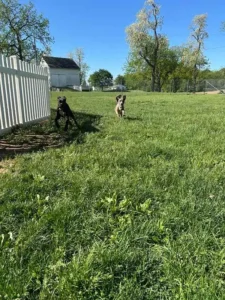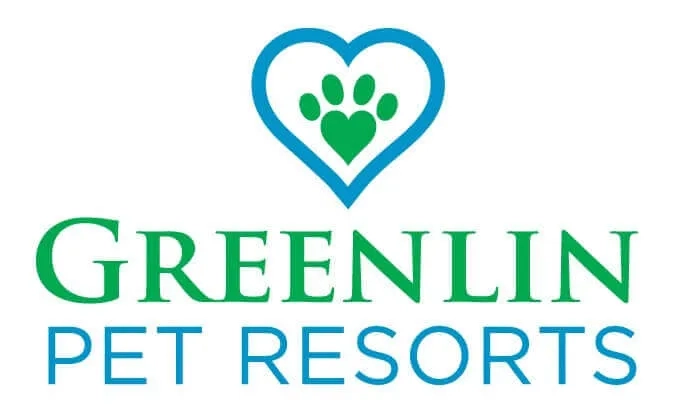Creating a Pet Friendly Garden
 There’s something special about spending time in the garden with your furry best friend by your side. Whether it’s your dog sniffing around your flower beds or your cat lounging in the sun, a backyard garden can be a shared sanctuary for both pets and people. But before you start planting, it’s important to make sure your garden is as safe as it is beautiful.
There’s something special about spending time in the garden with your furry best friend by your side. Whether it’s your dog sniffing around your flower beds or your cat lounging in the sun, a backyard garden can be a shared sanctuary for both pets and people. But before you start planting, it’s important to make sure your garden is as safe as it is beautiful.
Many common plants and landscaping choices can be harmful—or even toxic—to pets, especially curious dogs who love to explore with their mouths. The good news? With a little planning, you can create a thriving outdoor space that’s safe, stimulating, and pet-friendly.
In this guide, we’ll explore the best pet-safe plants to include in your garden, what to avoid, and how to design a space that encourages safe outdoor enrichment for your four-legged companions.
Looking for more ways to enrich your pet’s life? Greenlin Pet Resorts offers top-rated dog daycare and boarding across six Pennsylvania locations—perfect for pups who love to play and explore!
Why Pet-Safe Gardening Matters
Our pets are naturally curious, and that curiosity often leads them to sniff, chew, or dig through whatever they find in the yard, including plants. While many garden plants are harmless, others can pose serious risks to your pet’s health. Some can cause mild issues like an upset stomach or skin irritation, while others, like sago palms or certain lilies, can lead to life-threatening complications if ingested.
It’s not just the plants themselves that can be dangerous. Common garden hazards like chemical pesticides, synthetic fertilizers, and certain types of mulch (especially cocoa mulch, which contains the harmful compound theobromine) can turn a peaceful garden into a risky space for pets.
That’s why pet-safe gardening is so important. Creating a secure, non-toxic outdoor environment allows your dog or cat to explore, relax, and play freely, without putting their health at risk. A well-planned pet-friendly garden offers more than beauty; it provides peace of mind for you and a safe slice of nature for your companion.
Best Dog-Friendly Plants to Grow
These plants are non-toxic to dogs and often thrive in home gardens, offering both beauty and peace of mind. With a little research and thoughtful planning, you can build a vibrant, pet-safe garden that keeps tails wagging and blooms thriving.
Herbs
Herbs are an excellent choice for any pet-friendly garden. They’re aromatic, useful in cooking, and—most importantly—safe for dogs.
- Basil – A fragrant, easy-to-grow herb that’s completely non-toxic to dogs.
- Rosemary – Hardy and drought-tolerant, rosemary adds structure and flavor without risk to pets.
- Thyme – Creeping or upright varieties are all safe and create a beautiful texture in borders.
- Parsley (curly-leaf) – Adds a pop of green and is even known to help freshen canine breath.
Flowers
Brighten your yard with cheerful, pet-safe blooms that add color without the concern.
- Marigolds – These hardy annuals help deter pests and are non-toxic to dogs (though ingestion may cause mild discomfort).
- Snapdragons – Vibrant, tall flowers that are completely pet-safe.
- Sunflowers – Tall, sunny, and safe, these iconic flowers are great for gardens that get full sun.
Ground Covers and Grasses
Safe ground-level plants can make your garden feel lush while being gentle on paws.
- Creeping Thyme – Hardy, fragrant, and forms a dense mat that’s safe for pets to walk on or lie on.
- Irish Moss – Soft, cushiony, and dog-safe, this ground cover thrives in shady, moist areas.
These options are perfect for high-traffic zones or areas where your dog loves to nap.
Shrubs
Structural plants that offer both beauty and safety for your dog.
- Camellias – These evergreen shrubs produce beautiful blooms and are non-toxic to dogs.
- Hibiscus – Both hardy and tropical varieties are pet-safe and offer stunning floral displays.
Plants to Avoid in a Pet Garden
Even a small nibble of the wrong plant can be dangerous for your dog. While many flowers and shrubs add beauty to your landscape, some common garden plants are highly toxic to pets and should be avoided altogether.
Here are some of the most dangerous plants for dogs:
- Lilies – While particularly deadly to cats, some lily species can cause gastrointestinal upset in dogs.
- Azaleas – Ingestion can lead to vomiting, diarrhea, weakness, and even heart failure in severe cases.
- Foxglove – This tall, elegant flower contains cardiac glycosides, which can disrupt your pet’s heart rhythm.
- Daffodils – Bulbs are especially toxic and can cause severe vomiting, tremors, and cardiac arrhythmias.
- Tulips – Like daffodils, tulip bulbs are the most harmful and can lead to gastrointestinal distress and drooling.
- Sago Palm – Extremely toxic to dogs; even one seed can cause liver failure and death.
- Hostas – These popular shade plants can cause vomiting, diarrhea, and depression in dogs.
- Aloe Vera – While great for human skin, it contains saponins that can upset your dog’s digestive system.
Symptoms of Plant Toxicity in Dogs May Include:
- Vomiting and diarrhea
- Excessive drooling
- Lethargy or weakness
- Seizures or tremors
- Irregular heartbeat
- Loss of appetite
Tips for Creating a Dog-Friendly Outdoor Space
Designing a backyard that’s both beautiful and safe for your dog takes a little planning, but the result is a space where your pup can play, explore, and relax without worry. Here are some key tips to help you create a dog-friendly garden that works for the whole family.
Use Safe Mulch and Natural Fertilizers
When it comes to landscaping materials, not all options are pet-safe. Avoid cocoa mulch, which contains theobromine—the same compound in chocolate that’s toxic to dogs. Stick to alternatives like cedar, pine, or untreated wood chips. Also, skip chemical-based fertilizers and pesticides in favor of natural, pet-safe products like compost, fish emulsion, or organic lawn care formulas.
Design with Dogs in Mind
Think like a dog when planning your garden layout. Does your pup love to run laps? Include open paths for zoomies. Is your dog prone to digging? Offer a designated digging zone, like a sandpit or bark-filled bed, to redirect the behavior. Don’t forget shady spots for cooling off during warmer months—trees, dog-safe shrubs, or even a pet canopy work great.
Water Safety
Water features can add serenity to your yard, but they need to be designed with pets in mind. Keep ponds shallow and easily accessible, with gentle slopes so your dog can wade safely. Avoid deep basins or fountains with standing water, which may attract algae or bacteria. Consider a small doggy splash pad for a fun, safe way to keep cool.
Secure the Area
Even the most well-behaved pup can get curious. A secure fence is essential to prevent your dog from wandering off or encountering hazards outside your yard. Make sure fencing is high enough to prevent jumping, and check for gaps that a determined digger might exploit. Plus, fencing also helps keep unwanted wildlife or neighborhood pests out of your garden.
With a few thoughtful adjustments, your outdoor space can become your dog’s favorite hangout—safe, stimulating, and full of tail-wagging adventures.
Trust Greenlin Pet Resorts for Expert Pet Care
Whether you’re heading out to tend your garden or leaving town for the weekend, Greenlin Pet Resorts provides safe, engaging, and loving care for your furry companions. Our experienced staff treats every pet like family, ensuring they enjoy structured play, personalized attention, and a clean, secure environment.
With premium dog daycare, overnight boarding, puppy training, and enrichment programs, we help your pet stay active, social, and stress-free—whether it’s for a day or an extended stay. You can relax knowing your pet is having just as much fun as you are.
We proudly serve families across Central Pennsylvania with six convenient resort locations. Wherever you’re located, there’s a Greenlin Pet Resort nearby that is ready to care for your pet with professionalism and heart.
